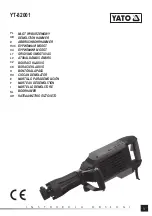
Appendix A: Wire Requirements
Connecting external system accessories to the main circuits must be carefully considered to ensure proper operation. It is important to use
the correct type of wire, gauge and run length for each circuit. The following table lists NAC wiring requirements for the HPF-PS6 and HPF-
PS10 Power Supply.
The numbers documented in this chart are worst case numbers, based on the conditions listed below. The maximum voltage drop, maximum
loop resistance, and wire length ratings can be increased with lower system current loading.
1.
The HPF-PS6/10 is full capacity loaded at 6A/10A.
2.
The HPF-PS6/10 is running at the Low Battery voltage of 20.4VDC (at Battery Connector TB15).
Wire lengths apply to Class B wiring, and to Class A wiring returned to the ZNAC-PS card.
Max Load
(Amps)
Max Loop Resistance
(Ohms)
AWG 12 (Solid)
AWG 14 (Solid)
AWG 16 (Solid)
AWG 18 (Solid)
0.25
12.804
3320
2087
1310
823
0.50
6.402
1660
1044
655
412
0.75
4.268
1107
696
437
274
1.00
3.201
830
522
327
206
1.25
2.561
664
417
262
165
1.50
2.134
553
348
218
137
1.75
1.829
474
298
187
118
2.00
1.601
415
261
164
103
2.25
1.423
369
232
146
91
2.50
1.280
332
209
131
82
2.75
1.164
302
190
119
75
3.00
1.067
277
174
109
69
Table A.1 Wiring Requirements for Power Supply
NOTE:
Calculations are based on Direct-Current Resistance data for uncoated copper wire, per National Electrical Code (2005 Edition) Table
8, Conductor Properties.
NOTE:
These distances reflect the worst case scenario and are based on the correct draw of the highest candela strobes at the low end of the
supported NAC voltage with the entire load at the end of the circuit. Further distances can be achieved by performing a point to point voltage
calculation that more accurately reflects the specific devices used and how they are dispersed on the circuit.
42
HPF-PS Series Instruction Manual —
P/N LS10227-003HP-E:C 2/2/2022











































